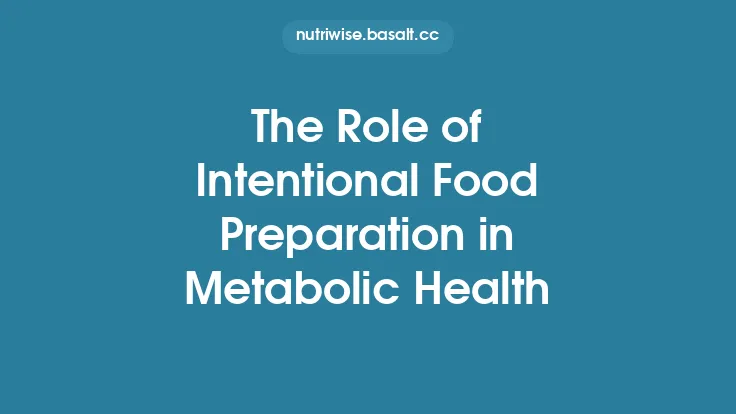Proteins are the building blocks of muscle, enzymes, hormones, and countless other functional components in the foods we eat. In their native state, many proteins are tightly folded into complex three‑dimensional structures that are stabilized by hydrogen bonds, hydrophobic interactions, disulfide bridges, and ionic contacts. While this precise folding is essential for the biological activity of proteins within living organisms, it can also make them relatively resistant to the proteolytic enzymes that operate in the human gastrointestinal tract. Heat treatment—whether by boiling, steaming, roasting, grilling, or baking—disrupts these stabilizing forces, a process known as denaturation. By unfolding the protein chains, heat can dramatically alter how readily digestive enzymes can access peptide bonds, thereby influencing the speed and completeness of protein digestion. Understanding the balance between beneficial denaturation and detrimental heat‑induced damage is crucial for both food scientists and home cooks who aim to maximize nutritional value while preserving sensory quality.
Understanding Protein Structure and Stability
Proteins are composed of amino‑acid residues linked by peptide bonds, forming linear polypeptide chains that fold into hierarchical structures:
- Primary structure – the specific sequence of amino acids.
- Secondary structure – regular patterns such as α‑helices and β‑sheets, stabilized mainly by hydrogen bonds.
- Tertiary structure – the overall three‑dimensional shape, resulting from interactions among side chains (hydrophobic packing, ionic bonds, disulfide bridges).
- Quaternary structure – the assembly of multiple polypeptide subunits into a functional complex.
The stability of these structures depends on the protein’s intrinsic properties (e.g., amino‑acid composition, presence of cysteine residues) and extrinsic factors such as pH, ionic strength, and temperature. In raw foods, many proteins exist in a compact, native conformation that limits the exposure of internal peptide bonds to digestive enzymes like pepsin (stomach) and trypsin/chymotrypsin (small intestine).
Mechanisms of Heat‑Induced Denaturation
When food is subjected to temperatures above the protein’s denaturation point (typically 40–80 °C for most animal proteins, slightly higher for some plant proteins), several molecular events occur:
- Disruption of hydrogen bonds: Thermal energy breaks the hydrogen bonds that maintain α‑helices and β‑sheets, causing these secondary structures to unravel.
- Loss of hydrophobic interactions: Heat increases molecular motion, allowing water molecules to penetrate previously buried hydrophobic cores, leading to unfolding.
- Reduction of disulfide bridges: At sufficiently high temperatures, especially in the presence of reducing agents, disulfide bonds can be cleaved, further destabilizing the tertiary structure.
- Aggregation and coagulation: Unfolded polypeptide chains expose reactive side chains (e.g., sulfhydryl, amino, carbonyl groups) that can form new covalent or non‑covalent bonds, resulting in protein aggregates. This is the basis for the firm texture of cooked eggs or meat.
The extent of denaturation is a function of temperature, time, and the heating medium (water, oil, steam). Short, high‑temperature bursts (e.g., searing) may cause surface denaturation while preserving interior structure, whereas prolonged moderate heating (e.g., simmering) leads to more uniform unfolding.
How Denaturation Improves Enzyme Access
Denaturation enhances digestibility primarily by increasing the surface area and exposing peptide bonds that were previously hidden within the protein’s interior. The key benefits include:
- Greater substrate availability: Pepsin preferentially cleaves peptide bonds adjacent to aromatic residues (phenylalanine, tyrosine, tryptophan). Denaturation makes these sites more accessible, accelerating gastric hydrolysis.
- Improved pancreatic enzyme efficiency: Trypsin, chymotrypsin, and elastase act in the small intestine on a broader range of residues. Unfolded proteins present a more random coil conformation, allowing these enzymes to bind and cleave more efficiently.
- Reduced steric hindrance: Aggregated or tightly packed native proteins can physically block enzyme binding. Heat‑induced unfolding reduces steric constraints, facilitating enzyme–substrate interactions.
Empirical studies on meat, fish, and legumes consistently show that moderate heat treatment (e.g., boiling for 10–20 minutes) can increase in‑vitro protein digestibility by 10–30 % compared with raw samples. This effect is especially pronounced for plant proteins that often contain anti‑nutritional factors (e.g., trypsin inhibitors) that are also inactivated by heat.
Heat‑Generated Chemical Modifications and Their Digestive Consequences
While denaturation is generally beneficial, excessive heat can trigger secondary chemical reactions that may impair digestibility or generate compounds of nutritional concern:
| Reaction | Typical Conditions | Impact on Digestibility |
|---|---|---|
| Maillard browning (reaction between reducing sugars and amino groups) | >120 °C, low moisture | Forms advanced glycation end‑products (AGEs) that can cross‑link lysine residues, making them unavailable for enzymatic cleavage. |
| Oxidation of sulfhydryl groups | High temperature, presence of oxygen | Converts cysteine to cystine or sulfonic acids, potentially leading to stronger disulfide cross‑links and reduced solubility. |
| Protein carbonylation | Prolonged heating, especially in oil | Introduces carbonyl groups that can hinder protease binding and increase bitterness. |
| Formation of indigestible aggregates | Over‑cooking, especially in dry heat | Excessive aggregation can create insoluble networks that resist enzymatic breakdown, lowering net protein availability. |
These modifications are dose‑dependent. For instance, lightly toasted bread exhibits minimal Maillard impact, whereas heavily charred meat surfaces can contain significant AGE levels that not only reduce protein digestibility but also raise concerns about oxidative stress in the gut.
Balancing Heat Intensity for Optimal Digestibility
Achieving the sweet spot between sufficient denaturation and minimal adverse modifications requires attention to three practical parameters:
- Temperature – Aim for the range where the target protein’s denaturation temperature is exceeded but not so high as to promote extensive Maillard reactions. For most animal proteins, 70–80 °C (e.g., gentle simmer) is effective; for legumes, 90–95 °C (boiling) works well.
- Time – Shorter cooking times reduce the likelihood of aggregation and oxidation. Using pressure cookers can achieve rapid denaturation at lower temperatures (≈115 °C) within minutes, preserving digestibility.
- Moisture environment – Water‑based cooking (boiling, steaming) dissipates heat more evenly and limits surface browning, whereas dry‑heat methods (roasting, grilling) should be monitored to avoid charring.
A useful rule of thumb is the “two‑minute rule” for most meats: bring the internal temperature to the denaturation point and hold for at least two minutes. This duration is typically sufficient for complete unfolding without excessive cross‑linking.
Practical Recommendations for Home Cooking
- Pre‑soak legumes: Soaking softens cell walls and reduces cooking time, limiting heat exposure while still achieving full denaturation.
- Use gentle simmering for eggs and fish: A water bath at 80 °C for 5–10 minutes yields fully denatured proteins with minimal Maillard products.
- Avoid over‑roasting: For poultry or red meat, aim for an internal temperature of 70 °C and stop cooking once the desired doneness is reached; let the meat rest to allow residual heat to complete denaturation.
- Incorporate acidic marinades: Mild acids (e.g., lemon juice, vinegar) can partially unfold proteins before heat is applied, reducing the required cooking time and preserving texture.
- Consider pressure cooking for tough cuts: The combination of elevated temperature and pressure accelerates denaturation while limiting oxidative reactions.
Future Directions in Research
The interplay between heat treatment, protein structure, and digestive outcomes remains an active field of investigation. Emerging areas include:
- Molecular dynamics simulations that predict denaturation pathways for novel plant proteins (e.g., pea, soy isolates) under various cooking regimes.
- In‑vivo digestibility studies using stable isotope‑labeled proteins to quantify the exact proportion of amino acids absorbed after different heat treatments.
- Development of “smart” cooking technologies that monitor real‑time protein unfolding (e.g., via infrared spectroscopy) and automatically adjust temperature to optimize digestibility.
- Exploration of combined processing (e.g., mild heat followed by enzymatic pretreatment) to further enhance protein bioavailability while minimizing formation of undesirable AGEs.
Continued collaboration between food scientists, nutritionists, and culinary technologists will refine guidelines that help consumers reap the full nutritional benefits of protein‑rich foods without compromising safety or sensory appeal.
In summary, heat treatment is a double‑edged sword for protein nutrition. Properly applied, it unfolds complex protein structures, making them more amenable to enzymatic attack and improving overall digestive ease. Over‑cooking, however, can introduce chemical modifications that diminish protein quality and potentially affect gut health. By understanding the underlying molecular mechanisms and applying evidence‑based cooking practices, we can harness heat to maximize the nutritional payoff of the proteins that form a cornerstone of a balanced diet.





